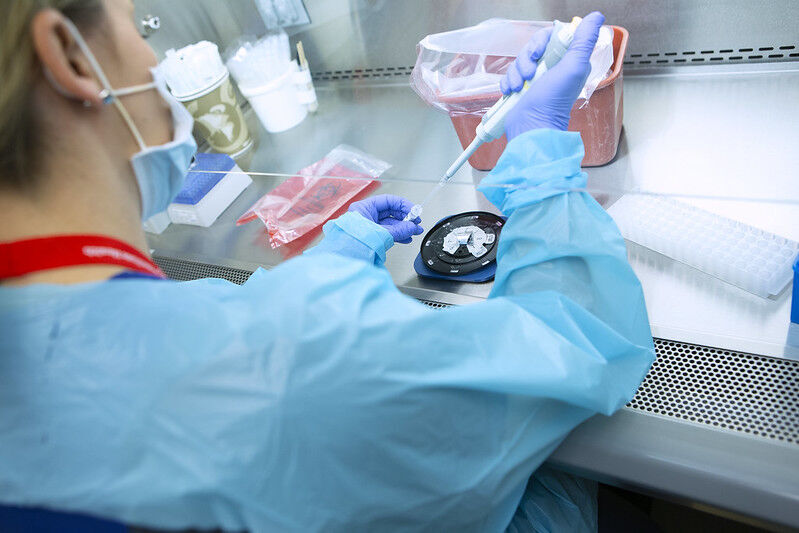Editorial: Why we needed random testing
The ISD Editorial Board commends Iowa State’s decision to start random COVID-19 testing to identify asymptomatic cases.
October 17, 2020
As of Monday, Iowa State reported its lowest number of positive COVID-19 cases yet, with only 43 individuals testing positive through on-campus testing.
This marks the fourth consecutive week in a row Iowa State has reported a positivity rate of less than 5 percent.
For comparison, there are currently 15 counties in Iowa that have positivity rates higher than 15 percent. Story County’s positivity rate is close to 7 percent.
All in all, it seems like Iowa State is faring pretty well. The positivity rate is decreasing every week, and the university is certainly doing better than the rest of the state.
However, we need to acknowledge that when it comes to testing, the results often don’t accurately reflect the true reality — something scientists acknowledged from the beginning.
For the most part, a person can get a test — either through TestIowa or at Hilton Coliseum — if they have symptoms of COVID-19 or got exposed to someone who later tested positive.
If you are experiencing symptoms of COVID-19 and then you get tested, you are more likely to test positive compared to someone without symptoms. This does not accurately show the percentage of the population that is actually positive for COVID-19.
That’s why it’s so important Iowa State began random testing Oct. 12.
Young people, ages 18-24, are more likely to be asymptomatic or experience mild symptoms from COVID-19. Randomly testing a segment of the population allows us to gain insight into the asymptomatic spread of COVID-19 on campus.
While community transmission on campus seems low compared to the rest of the state, we don’t currently know how many students are actually infected. Random testing will change that.
This step shows an increase in preparedness from Iowa State. If the university is able to conduct random testing, then clearly they have expanded their resources and testing capabilities. This will be more important than ever as we approach flu season. Students, faculty and families should feel comforted knowing there are more resources available as we battle the flu and COVID-19.
Iowa State appears much more prepared to fight COVID-19 now than they did at the beginning of the semester.
The editorial board does have concerns about making random testing voluntary. Students who live off campus and are selected may not have found it worthwhile to come to campus and get tested, or perhaps on-campus students simply decided not to participate.
We do appreciate the university provided incentives for selected students to actually go get tested. While we don’t currently know how many students followed through, the incentives hopefully made it so students who otherwise would not get tested received a test.
Random testing benefits Iowa State in a number of ways, and we want to commend the university administration for making this decision.
The results of these tests will be released soon, and if all goes well, they will reaffirm that Iowa State has COVID-19 under control. If not, the university must assess what areas are experiencing notable case counts and make a plan to further mitigate the spread of COVID-19.
Iowa State’s COVID-19 dashboard is updated weekly, with both cumulative and weekly testing results.







